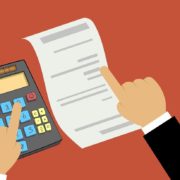Build a Budget You Will Actually Use – Practical, Easy & Mission-Focused
With costs rising virtually everywhere, building a budget isn’t just important — it’s essential. At Leone, McDonnell and Roberts, we consult with our clients to develop spending and savings plans that help them achieve future business goals — and it often all begins with establishing a budget to help them get there. Here are some of our tips and suggestions to build a budget you will actually use for your organization or business.
What is a budget?
On a very basic level, a budget is a financial plan designed to help you meet the goals and mission of your organization or business. A budget is a tool designed to help understand cash flow, and expenses. It’s also used to make future plans and measure progress. Of course, for a tool to be effective, it needs to be practical, easy to implement, and actually used. Here, we will walk you through the process and give you some best practices to make your budget as effective and user-friendly as possible.
Where should you start?
At Leone, McDonnell and Roberts, we recommend that our clients first think about their overall mission and what they want to achieve when planning their budget. Once you know where you want to go, the next step is to develop measurable goals for the year.
Make Goals Specific, Measurable, and Quantifiable
When developing your goals, always outline the concrete steps needed to achieve them. Additionally, every goal should be specific, measurable, and quantifiable. It’s better to have fewer goals that are well thought out than to have several vague goals.
How Much Will it Cost to Achieve Your Goals?
The next step is to determine what you’ll need to achieve your goal and how much everything will cost. The best way to do this is to make a detailed list of all the expenses your business or organization will incur to meet each goal.
Once you understand the resources you will need to meet your goals, it’s essential to develop a plan to obtain them. If there are costs related to obtaining these resources, such as hiring additional staff, include those expenses in your budget too. Beyond initial costs, you should also list any related fees associated with the expenditure.
Best Practices To Include When Creating Your Budget
It’s always critical to include a few best practices when developing your budget:
Best Practice #1: Document, Document, Document
Document the assumptions used to develop your budget and provide context on how you came up with each line item. Documenting all the numbers will help you understand why variances have occurred. For example, if rent is over budget, it could be because you planned to pay $500 a month in rent, but the lease ended up being $550 a month. Maybe you found a bigger space or utilities were included in your monthly payment; knowing this information can help you make adjustments as needed.
Best Practice #2: Budget By Month (Both Income and Expenses)
Whenever possible, break your yearly budget up by month and include both income and expenses. Cash flow is critical when developing a budget. If you notice your expenses are early in the year but your income comes later, you will need to rethink your budget.
Best Practice #3: Monitor Actual Results
Your budget is done — now what? Don’t simply put it in the drawer and forget about it. Instead, review your budget monthly and use it to monitor your actual results. Involve your business’ management team or organization’s whole board during the review process. During your monthly review, document the reasons for variances, which will be helpful for future financial planning. Finally, during this monthly review, determine if you need to adjust your plan to keep you financially on track throughout the rest of the year.










